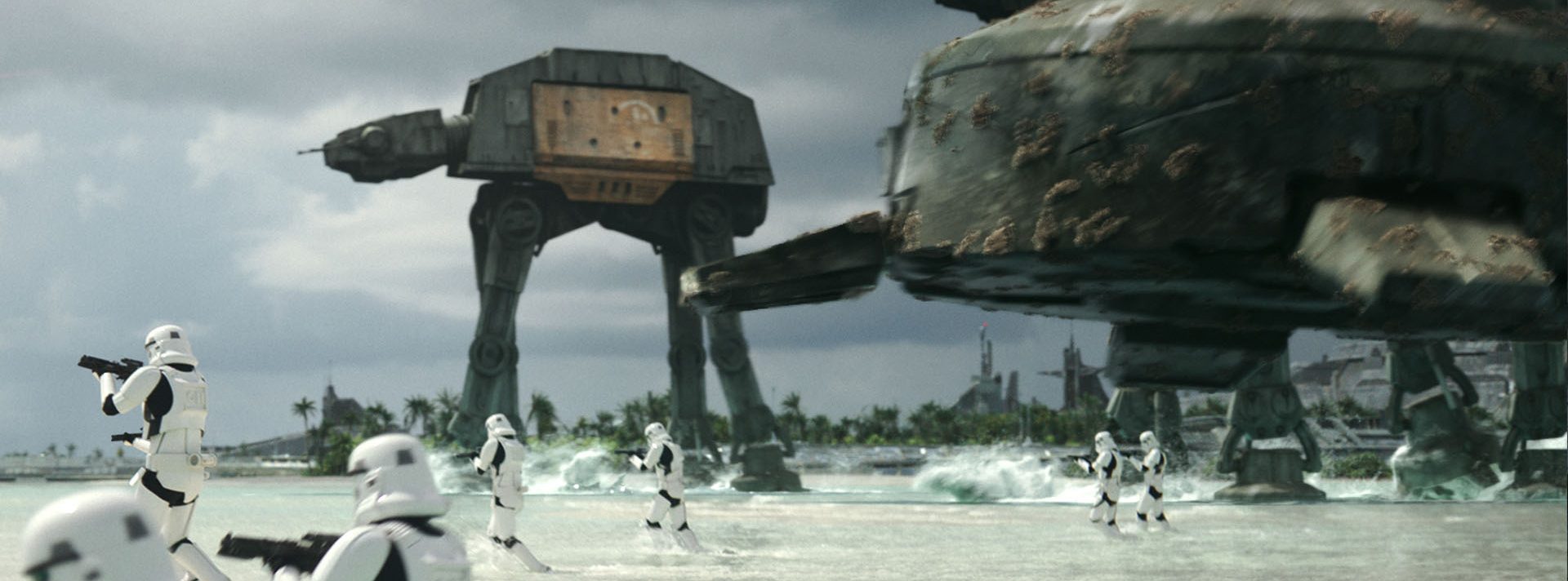The visual effects on Rogue One: A Star Wars Story represent the work of hundreds of artists in eight countries. The final film contains 1,697 visual effects shots, covering a great many environment creation and extensions, vehicles, characters, blasters, explosions. Visual effects supervisor John Knoll who also served as an executive producer on the film is also credited with dreaming up its original story.
The visual effects team made use of real-time rendering for scenes depicting the characters traveling in various ships throughout the film and for select shots of K-2SO, the dry witted former Imperial security Droid. Sets were also scouted through the use of StageCraft VR and ILM provided director Gareth Edwards with its StageCraft virtual camera system so he could choreograph and shoot coverage for a number of all CG sequences imbuing them with the same organic camera movement as Edward’s live action work on the film.
Among the many and varied visual effects challenges, the filmmakers challenged the effects team to create photoreal digital recreations of actors Peter Cushing, reprising his role as Grand Mof Tarkin in a substantial way, and Carrie Fisher as Princess Leia. Since, in the Star Wars timeline, Rogue One takes place immediately after A New Hope, the likeness of each had to be exacting.
Rogue One received Oscar and BAFTA nominations for Best Visual Effects as well as 7 VES Award nominations. The film also won a Saturn Award for Best Special Effects from the Academy of Science Fiction, Fantasy, and Horror Films.
